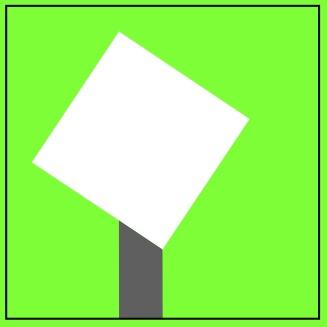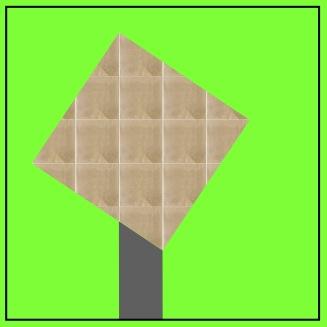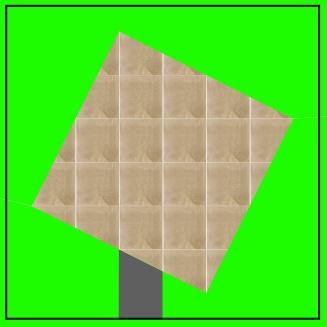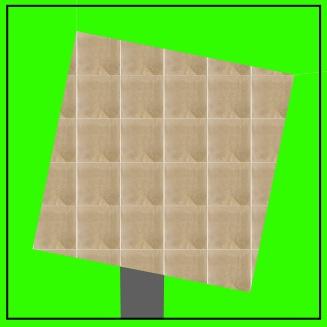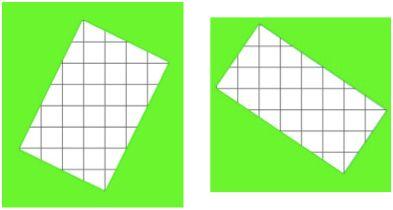Tiles in the Garden
This is a view, from above, of my friend's garden. You see a black path and a square patch in the middle.
He wants to tile the square in the middle with tiles going straight across and down. He would also like to have the corner of a tile at each of the corners of the square.
Then it'll look like this;
So, we are off to help him. He has a good tile cutter to get the "part-tiles", so he'll be able to cut a tile into two or more pieces and use them all. But I said that we would fetch the tiles for him. How many do we need for the example above?
How many would we need for these two other garden square shapes that someone might like to have? How are you working it out?
Why do this problem?
This
activity is designed to create a challenge that pupils will not have been taught or leant how to do straight away. they therefore have to use their individual problem solving skills. When different approaches have been used by different
groups or individuals then the discussion about different appraoches can take place.
Possible approach
Explain that you're not expecting them to necessarily know straight away how to do it. Encourage them to devise a way, through problem solving to find the answers. The pupils may be ecouraged to validate their suggestions. Then a discussion can be had around the class as to the advantages and disadvantages of the different approaches.
Key questions
Tell me about what you are doing?
Are you happy with your answers?
Possible extension
Create other rectangles that could fit over a framework of smaller squares, here are two examples.
Possible support
You may need for some pupils to use some large-squared paper and a pair of scissors to cut out the shapes required.
